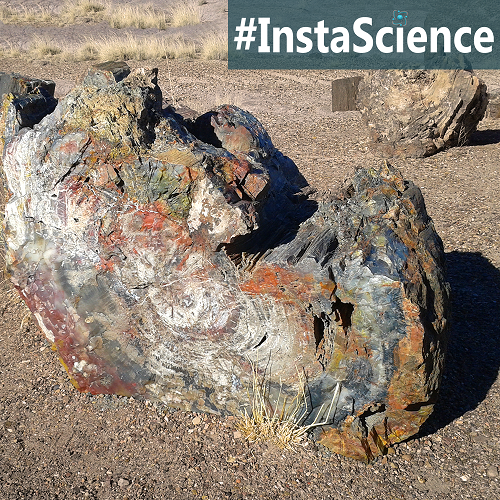
Petrified wood has always fascinated me. It was a dream of mine to see this rock in person for a long time – one that I finally got to fulfill several years ago during an epic road trip out west.
Petrified wood is a perfect example of a replacement fossil, which is a replica of something that was once alive, such as trees or sea creatures. The fossil forms when the living thing is trapped and are covered by mineral-rich water. In the absence of oxygen, the organic material is replaced by hardened minerals. The minerals fill in the spaces and create a replacement, or replica, a fossil of the living thing.
Some pieces of petrified wood look identical to the original specimen, while others display an array of beautiful colors. This depends on upon the minerals that were deposited and any impurities, such as iron or cobalt that were present. Petrified wood can also contain pockets of crystallized quartz in a sample, adding to the beauty of this rock.
Petrified wood is not as rare as I once thought. It can be found in areas of volcanic activity or sedimentary rock deposits around the globe. Deposits of petrified wood have also been found near coal seams. If you live in the US, there are petrified wood parks in Arizona, California, Mississippi, New York, and a few other places – chances are there is one within a day’s drive from where you are!
Fun Fact – In Louisiana, there is a deposit of petrified palm, which is not considered petrified wood because palms don’t produce wood.
More Homeschool Science Helps
- This time last year, we shared about Squirrels.
- Don’t miss episode 17 of my podcast where I shared our favorite way to do nature study during the frigid winter months!
Links to Research
 Sign up below to receive weekly tips & tools for homeschool science and we'll send you a FREE copy of
Sign up below to receive weekly tips & tools for homeschool science and we'll send you a FREE copy of